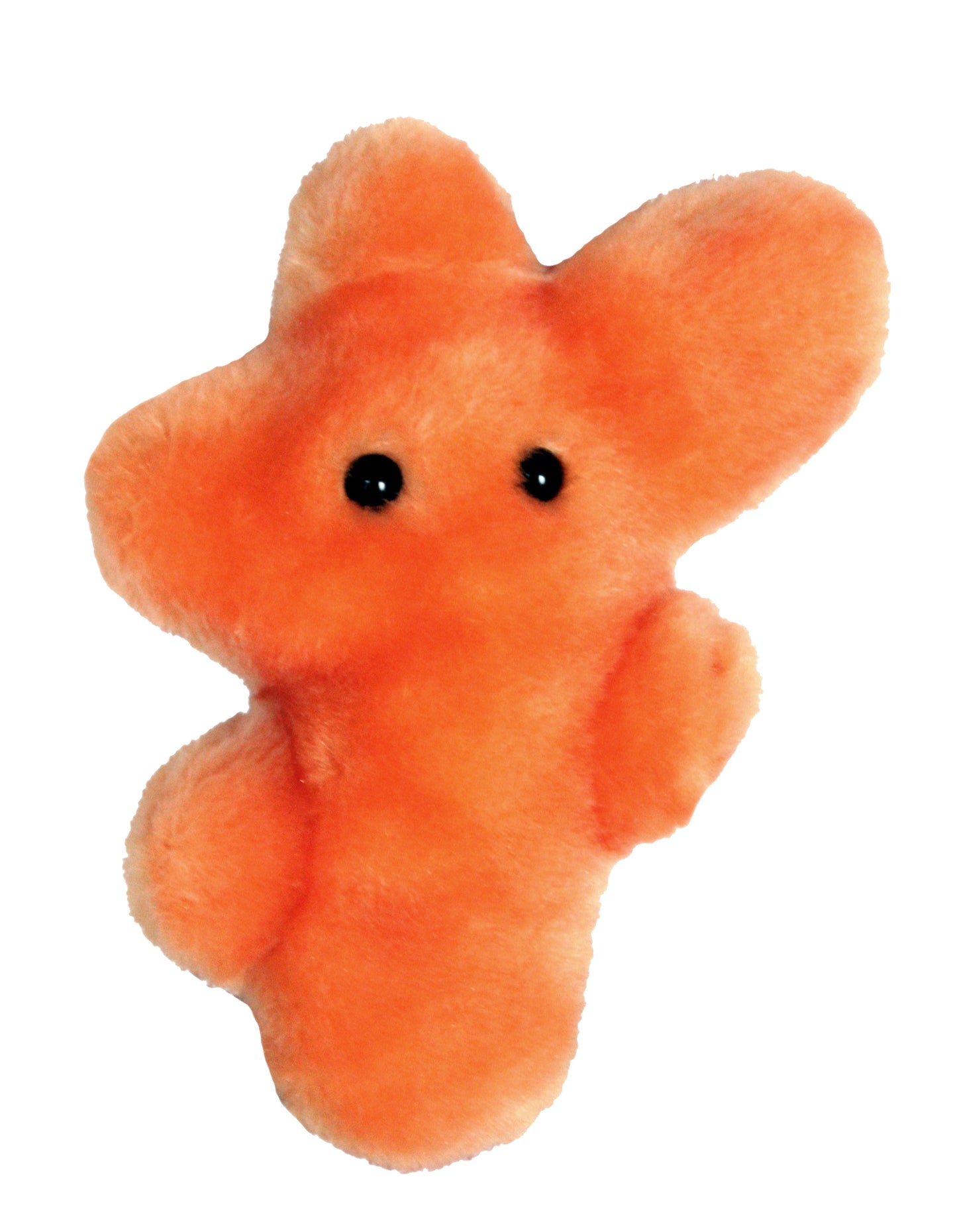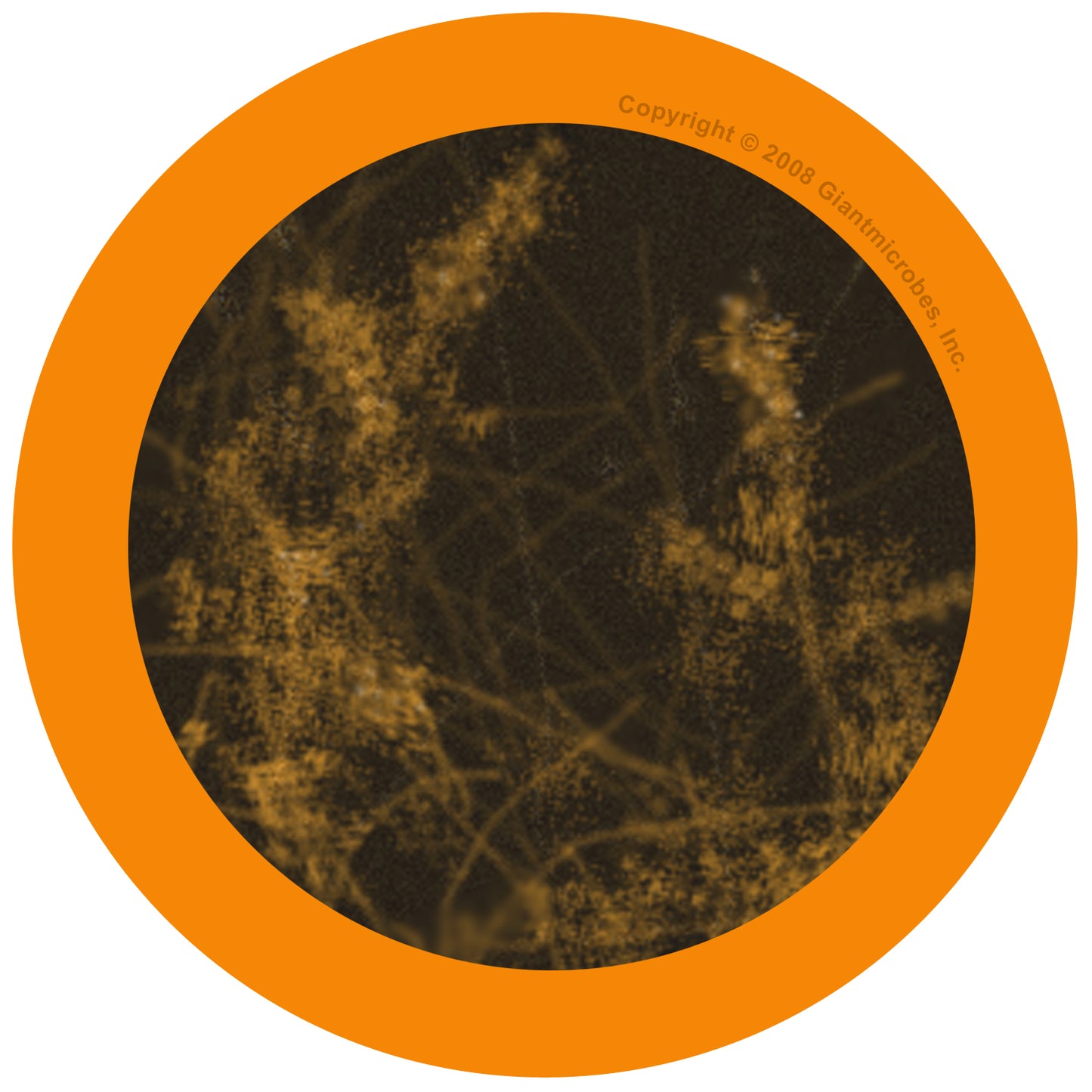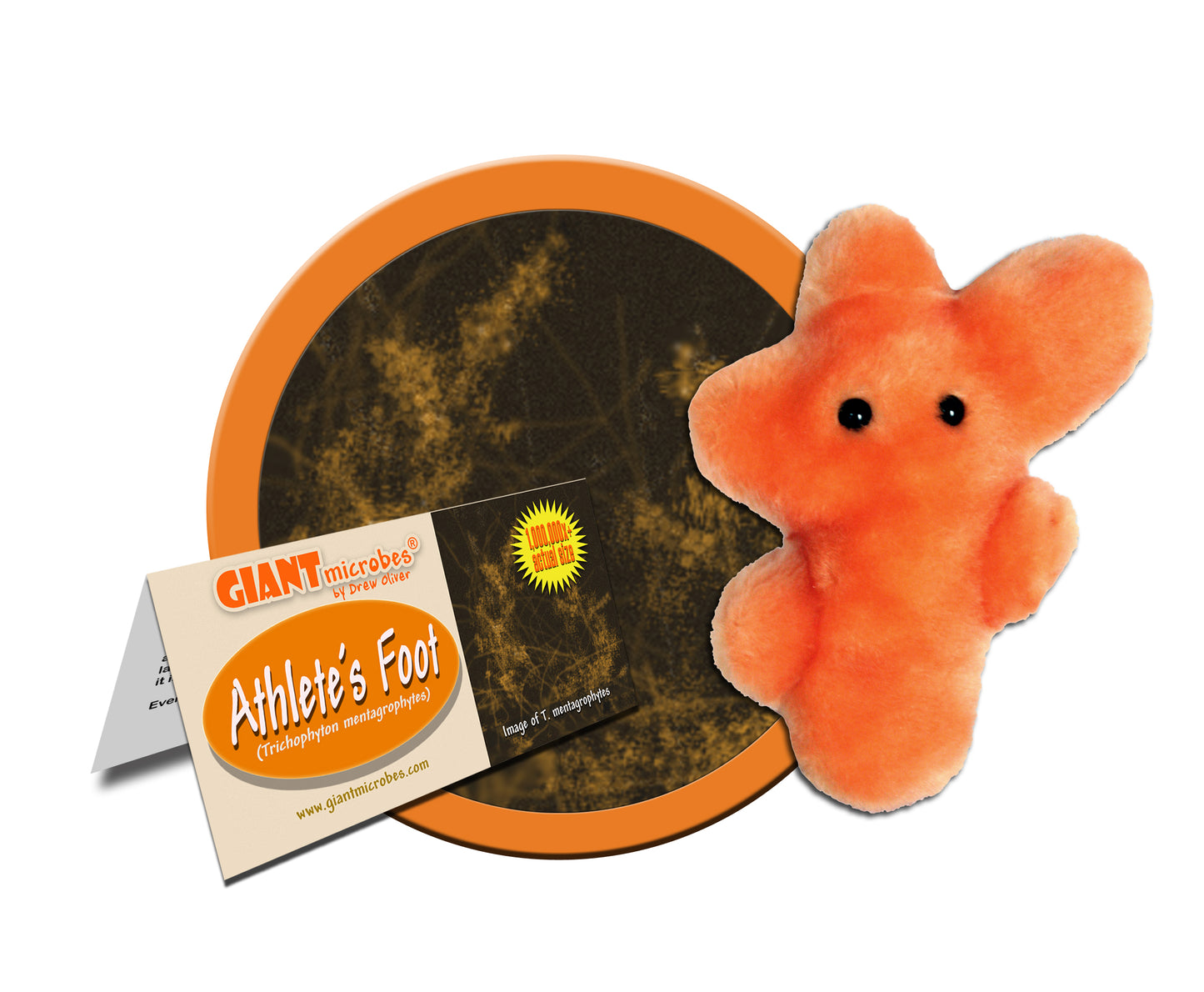Athlete's Foot (Trichophyton Mentagrophytes)
Athlete's Foot (Trichophyton Mentagrophytes)
Couldn't load pickup availability
- Don’t forget to change out of your sweaty socks!
- And, wear flip flops in public showers!
All About Athlete's Foot (Trichophyton Mentagrophytes)
FACTS: In ancient times, athlete’s foot was attributed to insect bites. (In medical Latin it's called tinea pedis, or foot larvae.) However, in the 19th century a team of scientists discovered that microorganisms were responsible! Although a variety of fungi can cause foot rashes, Trichophyton mentagrophytes cause the itchy, cracked skin typically found between the fourth and fifth toes.
Athlete’s foot is the most common fungal skin infection. While it is particularly prevalent among adolescent boys and men, nearly 70% of the population will have to wrestle with the infection at some point. Fortunately there are numerous powders and creams that can help even the score – though in the most severe cases, prescription medication may be required to deliver the knockout punch.
Of course T. mentagrophytes don’t only pick on jocks! But they do love the warm, moist environment found in locker rooms and pool areas – and between your toes. Shoes and sneakers also play a large role in creating the cozy conditions where the fungus thrives: it is virtually unheard of in places where people go barefoot.
Even so, if you catch it, be a sport – and don’t go barefoot!
NAME Trichophyton mentagrophytes
ACTUAL SIZE It has an area of about 9 squared micrometers, about 60 million of these fungi fit on a postage stamp!
WHERE IT LIVES In the top few layers of the skin in areas like hands, nails, toes, or the groin.
SYSTEM The integumentary (skin) system is affected.
COMMONALITY Approximately 26.5 million individuals in the United States are afflicted with athlete's foot annually.
SYMPTOMS Itchiness, burning sensations, pain, developing scales (and unsightliness).
CURE • Over the counter ointments are effective at treating athlete’s foot. Prescription medication is also available for tougher cases.
• Our microbe makes a great gift for your nurse, doctor, or other health professional friends who encounter patients with athlete’s foot!
• Do not scrape at scaling skin; this could promote further infection.
DEADLINESS/SEVERITY Athlete’s foot is more of a nuisance than anything deadly.
INFECTIOUSNESS
• Athlete's foot is contagious and can be spread by contact with an infected person or from contact with contaminated surfaces, such as towels, floors and shoes.
• Damp socks and shoes and warm, humid conditions favor the organism's growth.
HISTORY Tinea pedis was first described by Arthur Whitfield, a dermatologist at King’s College Hospital, London in 1908. The name “Athlete’s foot” was given by corporations making medications.
World War I saw large outbreaks of infections to the scalp, hands and other areas (the trench warfare served as almost an ideal breeding ground for our nasty microbe friend!)
FASCINATING FACTS
Trichophyton mentagrophytes in dogs and cats or other domesticated animals causes ringworm!
Men get athlete’s foot more often than women.
Other fungal microbes also cause athlete’s foot, but Trichophytons are the most common cause.
Athlete's Foot in Culture: Don’t feel down about having unsightly athlete’s foot! Even celebrities like Kate Moss, John Madden, Cristiano Ronaldo, and Madonna have all admitted to struggles with fungal infections on their nails and toes!
Grizzly Tales for Gruesome Kids, Season 4 Episode 11: “Athlete’s Foot”






